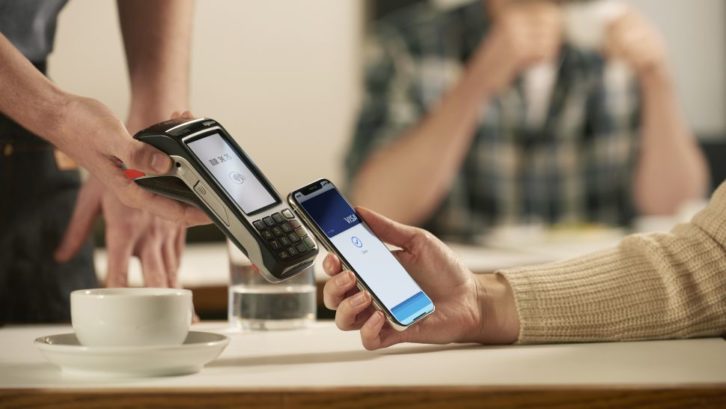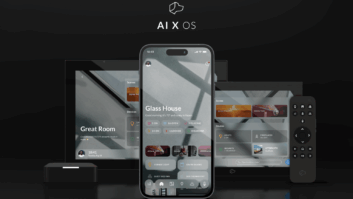
In today’s multi-channel digitized world, retailers, marketers, and customer service experts all need to adapt and react quickly to optimize the end-user experience continuously.
However, it’s not as simple as offering a one-size-fits-all experience to satisfy all customers: Baby Boomers, Millennials, Gen Z, and Gen X all have different levels of personal technology adoption and behaviors across platforms, all of which have to be considered.
Artificial Intelligence (AI) technology is a key ingredient when it comes to personalization in retail. It does not just create customer loyalty and stickiness, driving profit and revenue, it is also an essential element of the accessibility mix for the disabled, and this ‘tech for good’ can help bridge the disability gap, ensuring no one gets left behind.
Technology makes the impossible possible

The latest estimates from the UK Government’s Family Resources Survey indicate that 14.6 million people in the UK had a disability in the 2020/21 financial year, which represents 22% of the total population. Furthermore, there are also segments of people and consumers with invisible or hidden disabilities, such as cognitive disabilities or chronic illnesses. Understanding the needs of customers is so important and should not just be assumed.
To successfully bridge the retail disability gap, brands need to reimagine the buyer journey, from consideration to post-purchase stages, ensuring the detail is mapped out. Buyer journey assumptions need to be tested, especially for those living with disabilities.
Strategic thinkers should adopt an accessibility-first approach by prioritizing and improving accessibility for this underserved segment. By creating a truly inclusive customer experience, brands and retailers will build loyalty, open up the full online and offline spending power of their customer base and increase their lifetime value. Technology not only makes things easier for people with disabilities, but it also makes the impossible possible.
Predictive analytics and inclusive design
AI and big data analytics can open up and totally reimagine retail services to support independence and autonomy in the lives of people living with disabilities, whilst also providing cost-saving innovation and customer service which can be personalized for specific disabled communities.
Retail industry leaders need to share good practices in the development of new assistive technologies that break down barriers and transform lives for people with disabilities through inclusive design. To develop intelligent accessible platforms across retail, players need to look at research and development practices and include diverse decision-makers, right from the beginning of the design process.
 AI can be applied to any type of customer profile when algorithms are exposed to more data, they can learn and improve. To bridge the various disability gaps in retail, data about the profiles using services is needed, and then the omnichannel experience can be created to suit those needs. Tech can be implemented to improve accessibility. AI can also monitor, deliver and report on the purchase behavior to personalize service that supports specific disabilities in many different ways.
AI can be applied to any type of customer profile when algorithms are exposed to more data, they can learn and improve. To bridge the various disability gaps in retail, data about the profiles using services is needed, and then the omnichannel experience can be created to suit those needs. Tech can be implemented to improve accessibility. AI can also monitor, deliver and report on the purchase behavior to personalize service that supports specific disabilities in many different ways.
For example, a person with Alzheimer’s can be supported via big data and AI. The disease may cause them to make multiple online purchases of a product in a day. Rather than limiting their independence and keeping them away from shopping, their carers could limit the amount spent on their account or set up purchase alerts to keep track.
For the visually impaired customer, QR codes on product labels can be linked to product information that can be accessed via smartphone apps with built-in accessibility modes. The visually impaired can be further supported by geo-based store apps supporting store navigation, personalized further by navigating them to the products that were on their personal shopping lists saved at home on their smart speaker.
For the hard of hearing QR codes can access product information to provide real-time captioning or translations for people that do not even speak the language.
Customer service text or voice-based bots can help advise all groups in the best format possible to support both in-store and online experiences and AI and big data can continue to be optimized and create personalized services. Further personalization happens in the way that the services are promoted to the disabled, in the way most suited to their disabilities. Best practice case studies should be shared with different organizations supporting groups of people with different special needs to raise awareness of available support and also drive innovation.
Operational alignment
Big data can also help optimize the daily activities of sales, product, marketing, and operations by creating alignment and an optimized end-to-end sales cycle. This will streamline the customer journey and reduce wasted resources, marketing budgets, time, and excess stock levels.
In terms of special accessibility features for the disabled, they could be promoted as part of the brand’s customer service offering, adding extra brand value. Care certainly has to be taken in terms of privacy for the vulnerable or disabled customer’s data, through a well-managed, cyber-secure system.
Personalized recommendations
 In the hustle and bustle of everyday life, customers are continuously hopping across their own omnichannel worlds, so it is essential for brands to create seamless, personalized experiences that people have grown accustomed to in their digitized world.
In the hustle and bustle of everyday life, customers are continuously hopping across their own omnichannel worlds, so it is essential for brands to create seamless, personalized experiences that people have grown accustomed to in their digitized world.
There is a real opportunity to help customers save time and effort using AI chatbots or virtual shopping assistants. This could include providing gift recommendations for major gifting periods or based on previous purchases. Customers could also be targeted with special promotions based on previous purchases, informed by intelligence based on product usage.
Chatbots or voice-based virtual shopping assistants can be implemented into omnichannel ecosystems to drive ease of search, speed of purchase, and accessibility for both able-bodied and those with disabilities. Text or voice-based search can be implemented at different stages of the omnichannel experience, in-store, online, or on the go, and personalized either to support the needs of individuals or serve up suggested product categories based on wider seasonal purchase trends. The next steps to bake in accessibility could be around delivery preferences including in-store pickup, last-mile delivery, or home delivery directly from a fulfillment warehouse. Retail purchases and deliveries should be managed around people’s lives, not visa versa. By creating a bespoke customer experience retailers will build loyalty, and secure repeat purchases and recommendations.
AI: the essential ingredient in the personalization mix

AI is an essential ingredient of any personalization strategy as it helps understand customer preferences on mass. Manually scanning through individual user history would be far too time-consuming, so AI helps discover individual and group customer preferences so organizations can tailor content and product suggestions on a grand, efficient scale.
Big data analytics and AI also enable retailers to create detailed profiles of individual customers, and this insight enables personalized marketing messages in online and in-store promotions, together with a tailored, consistent omnichannel experience that drives customer engagement and loyalty.
However, AI can deliver beyond the sales button for disabled customers as they meet a plethora of issues during the final mile. Key challenges include not being able to answer the door in time to fit busy delivery schedules, with parcels left in awkward inaccessible places, or not being delivered at all.
By using the power of AI, two-way communication with the end customer would enable the final touch to optimize delivery or pick-up fulfilled by the courier – via the app platforms they love the most.
Seamless channel hopping
Seamless and personalized experiences are essential in today’s increasingly crowded retail market. Consumer expectations, and the desire to shop in various ‘channel-hopping’ ways, means that being able to deliver seamless experiences across each touch point across every channel is the only way to win consistent customer loyalty.
Ease of access to multiple channels linked to personalized profiles can identify a customer’s preferred channels of communication, delivery and recommendation preferences. In terms of prioritization and profitability, it makes sense to first look at the most loyal customers. Research their accessibility requirements then map out the omnichannel environment and how it will support their end-to-end needs.
Innovation so no one is left behind
Technology makes things easier not only for the time-poor, able-bodied consumer but it can also make things possible for the 22% of the UK population with disabilities. It’s important that this underserved demographic is considered in the planning of omnichannel environments, not just for profitability, but to create a fairer, more inclusive, and accessible world that bridges the disability gap. Accessibility should be a right, not a luxury.
Please contact Tovie AI for a demo on how AI chatbots and virtual shopping assistants work in brick-and-mortar stores, online and omnichannel environments.
See also: Another View: The Power Of Personalization During The Gifting Season And Beyond













